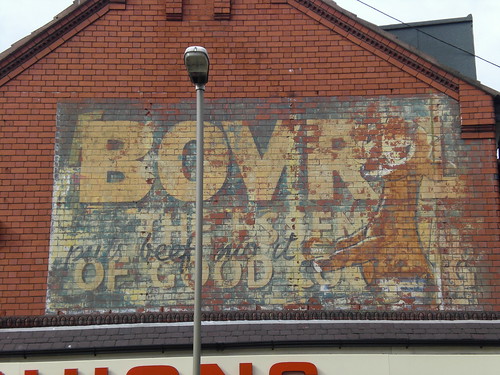Why DO we love Leicester?

Bovril Ghost Sign, off Narborough Road, by Me!
Anyway, Colin's talk particularly fascinated me, because it was illustrated with photographs of Leicester, showing how it has changed and developed over the last hundred years or so. Malcolm - of the History Lab - has posted a link to one of Colin's EMOHA websites, which documents, by way of photographs and audio recordings, the interiors of some of Leicester's more unusual landmarks; it's barber-shops, cafes and factories. It's called Semper Eadem (always the same) - for the uninitiated, that's the city of Leicester's motto. Definitely well worth a look.
Colin's talk also highlighted, for me, the impact of the growth of digital photography and opportunities to store and share images online. In years to come, social and architectural historians, will have an enormous wealth of visual information available to them. And not just the big, apparently significant things, but all the small, prosaic, often overlooked stuff; the things that make the city look like it does. Turns out that Colin is a bit of a ghost sign aficionado, like me. (I will write about my 'collection' in Collector's Corner soon, promise). But there are many others documenting the 'minor details' on a regular basis, recognising the importance of its industrial heritage and making the results accessible to all through photo-sharing sites like Flickr. See here, here, here, here and here for a few examples. This is why I love Leicester.
The last set of photos are mine, btw. :)
Comments